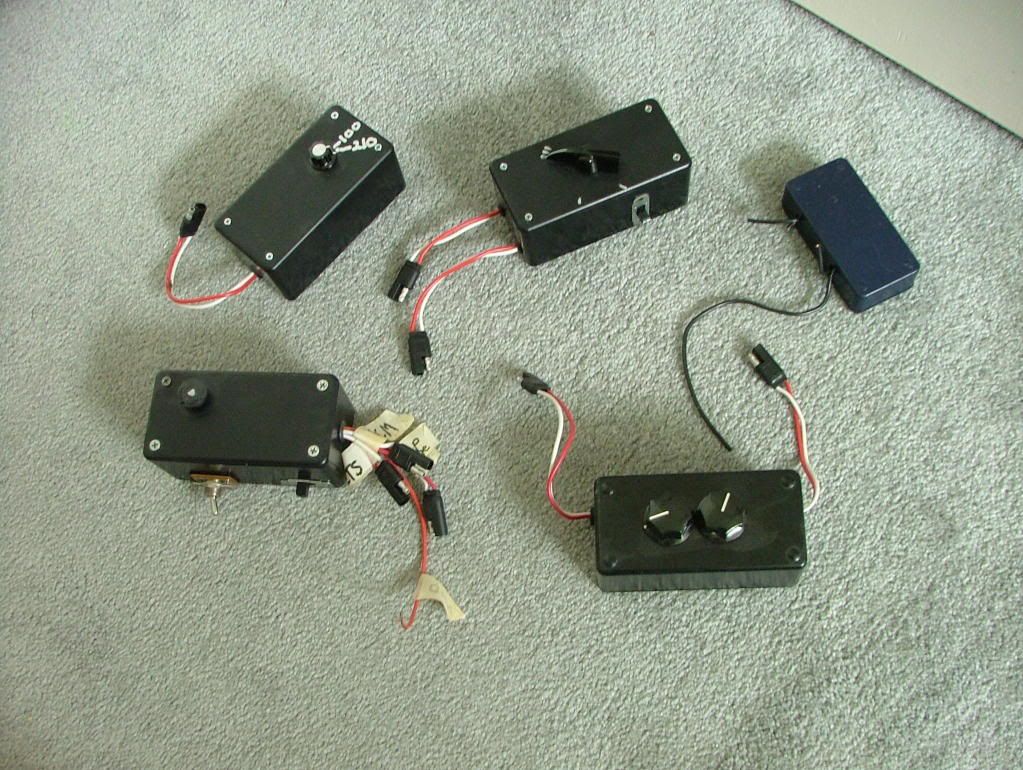C3H8,
You are correct in that fooling the CTS (coolant temp sensor) can result in improved fuel mileage by several means, and have other advantages you may not have thought of.
I started making and using CTS trickers (I call "Tricker Boxes") in the early 1990's as a tuning and troubleshooting aid. I have been tuning cars for performance or gas mileage since 1990. Back then, there was almost no reliable means of datalogging besides DIACOM, which is what I had, and very little support calibrating (tuning) automotive ECMs. Even after more tuning suites and support became available, I found that the old tricker box was still an invaluable aid for tuning, and extremely handy to have around for day-to-day driving. I would not do, or own a project that didn't use some form of the tricker box function.
Here's a link to some diagrams I drew up for different CTS/gauge schemes and a shot of my spares that have collected over the years from past projects, or taken out of service due to upgraded or enhanced design.
Tricker boxes pictures by olympiadis3 - Photobucket

The project boxes you see are easy to make from Radio Shack parts, and serve well as a temporary plug-n-play type of device for testing or tuning.
I prefer the switchable kind which my diagrams represent.
In the diagrams, there is a DPDT switch in the middle which has 6 electrical connection terminals. The slider type switches from Radio Shack (seen on a couple of my old boxes there) are unreliable, so I prefer a heavier duty all-metal switch.
MCM Electronics has some very nice quality 10-turn potentiometers (extra precision) in various resistance ranges. Part # 502-0105 is a common one I use, but the range needed depends on the particular CTS. Different auto makers use different sensors. For example, most Fords need a much higher range of resistance.
With some sensor/gauge set-ups, it is possible to use a bi-level potentiometer as you can see in one of my diagrams. This allows you to switch your temp gauge display back and forth to check between your tricked temp setting, and the actual coolant temp. This allows quicker adjustments without need of a DMM and a resistance conversion chart. This isn't needed in all vehicles, depending on how the gauge data is displayed.
The old tricker box in the lower right corner has a pot for both CTS and IAT.
The IAT function is primarily for troubleshooting and setting up ECM/PCM calibrations. It's
NOT of significant benefit for daily driving. Some racing applications can use them as a spark advance adjustment - more advance for increased octane, or less for N2O use. It can make a needed difference, especially when the Spark vs IAT table (in the calibration) is set up in advance. Factory calibration has only minimal spark adjustment based on IAT, and some calibrations have none.
These boxes you see in my pic are old test-n-tune boxes made for quick in&outs. For permanent installs, a rotary switch with some fixed resistors mounted on a board is all that is needed in a lot of cases. You use a DPDT on/off switch between your rotary, sensor, and ECM, and a few fixed-value choices via the rotary. For instance, if your ECM turns on your electric cooling fan at 230*F, then you use a fixed resistor for 225*F as one of your rotary choices to prevent fan operation. If you want a fan over-ride (to turn on the fan) choice on your rotary, then have a 235*F choice on your rotary switch. If you want 100% stock configuration, then just flip your DPDT switch to off.